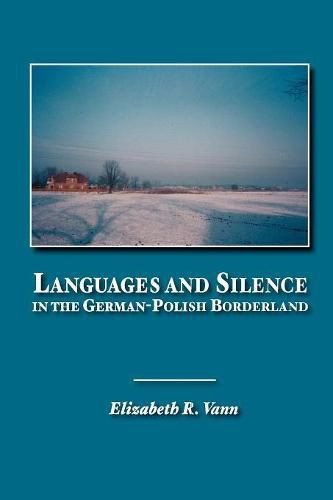Readings Newsletter
Become a Readings Member to make your shopping experience even easier.
Sign in or sign up for free!
You’re not far away from qualifying for FREE standard shipping within Australia
You’ve qualified for FREE standard shipping within Australia
The cart is loading…






Languages and Silence is an ethnography that focuses on a region of Silesia near Opole where the inhabitants speak three languages: Polish, German, and Silesian. The author spent several different extended periods of time living in a town that she calls Dobra, and she attempts to analyze the different ways that the inhabitants use the three languages and the situational, associational, political, and historical reasons they choose to speak whatever language they are speaking at any given moment.
Elizabeth R. Vann describes interpersonal situations in which a speaker uses specific words in one language or another for a particular purpose. Among the study’s conclusions are that Silesian is associated with social familiarity and playfulness, while Polish is an expository register that makes a relatively intense, unidirectional claim on addressees’ attention, and German is used as a language of conflict. Additional dimensions of contrast have to do with speakers’ evaluations of cultural and temporal distance, with Silesian indicating cultural closeness (identity as well as indigeneity or archaism), Polish greater cultural distance (and fanciness), and German a farther extreme of otherness.
The author also argues that the analysis of this linguistic complexity can tell us a lot both about how individuals construct their ethnic and national identities, and how that construction is interwoven with psychology, politics, and history.
$9.00 standard shipping within Australia
FREE standard shipping within Australia for orders over $100.00
Express & International shipping calculated at checkout
Languages and Silence is an ethnography that focuses on a region of Silesia near Opole where the inhabitants speak three languages: Polish, German, and Silesian. The author spent several different extended periods of time living in a town that she calls Dobra, and she attempts to analyze the different ways that the inhabitants use the three languages and the situational, associational, political, and historical reasons they choose to speak whatever language they are speaking at any given moment.
Elizabeth R. Vann describes interpersonal situations in which a speaker uses specific words in one language or another for a particular purpose. Among the study’s conclusions are that Silesian is associated with social familiarity and playfulness, while Polish is an expository register that makes a relatively intense, unidirectional claim on addressees’ attention, and German is used as a language of conflict. Additional dimensions of contrast have to do with speakers’ evaluations of cultural and temporal distance, with Silesian indicating cultural closeness (identity as well as indigeneity or archaism), Polish greater cultural distance (and fanciness), and German a farther extreme of otherness.
The author also argues that the analysis of this linguistic complexity can tell us a lot both about how individuals construct their ethnic and national identities, and how that construction is interwoven with psychology, politics, and history.